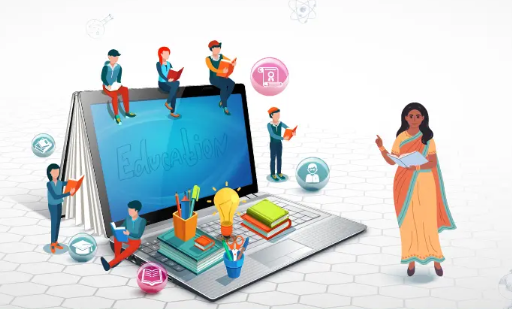The Impact of Modern Education Systems on Student Development

In today’s rapidly evolving world, education stands at a critical crossroads. The traditional models that have shaped generations of learners are increasingly being questioned, reformed, and in some cases, completely reimagined. These changes come at a time when access to information has never been easier, yet the challenges facing students and educators have perhaps never been more complex.
The Changing Landscape of Learning
The 21st century has brought unprecedented changes to how we understand learning and educational development. Digital technology has transformed classrooms from isolated environments to connected hubs of global information exchange. Students today have access to resources that would have seemed impossible just decades ago, creating both opportunities and challenges for modern educators.
This transformation extends beyond just the tools of learning to the very philosophy that underpins educational systems worldwide. Progressive approaches focusing on critical thinking, creativity, and adaptability are gradually replacing rote memorization and standardized testing as the primary metrics of success. However, this transition is neither uniform nor without controversy.
Measuring Success: Beyond Standardized Testing
Traditional school ratings have long relied on standardized test scores as their primary metric. This approach, while providing easily quantifiable data, has been increasingly criticized for its limitations. A school’s true quality encompasses far more than test results – including factors such as student well-being, development of social-emotional skills, creative expression, and preparation for real-world challenges.
Many educational experts now advocate for more holistic evaluation systems that consider:
- Student growth rather than absolute achievement
- Development of critical thinking and problem-solving abilities
- Social-emotional learning outcomes
- Community engagement and service learning
- Graduate success in higher education and careers
- Inclusivity and support for diverse learning needs
These broader metrics provide a more comprehensive picture of educational quality, though they can be more challenging to measure and standardize across different contexts.
The Role of Technology in Modern Education
Technology’s integration into education represents both tremendous opportunity and significant challenge. Digital learning tools can personalize education in unprecedented ways, adapting to individual student needs, learning styles, and paces. Artificial intelligence and data analytics offer insights into student performance that can help educators identify struggles early and intervene effectively.
However, the digital divide remains a pressing concern. Access to technology and high-speed internet varies dramatically between communities, creating potential inequities in educational opportunity. Furthermore, questions about screen time, digital distraction, and the long-term effects of technology-mediated learning remain incompletely answered.
Successful technology integration requires thoughtful implementation that prioritizes pedagogical goals over novelty. When technology serves learning objectives rather than defining them, it can be a powerful force for educational improvement.
Addressing Diverse Learning Needs
Modern educational systems increasingly recognize the diverse needs of their student populations. This includes not only accommodations for students with learning disabilities or special educational needs but also recognition of different learning styles, cultural backgrounds, and individual interests.
Differentiated instruction – tailoring teaching approaches to meet individual student needs – has become a cornerstone of effective education. This approach acknowledges that students learn in different ways and at different rates, requiring flexible teaching strategies rather than one-size-fits-all approaches.
Inclusion has similarly evolved from simply placing students with diverse needs in mainstream classrooms to creating truly supportive environments where all students can thrive. Effective inclusion requires trained educators, appropriate resources, and school cultures that value diversity as a strength rather than a challenge to be overcome.
The Global Perspective
Education systems vary dramatically across countries and cultures, reflecting different values, resources, and historical contexts. International assessments like PISA (Programme for International Student Assessment) have highlighted these differences, sparking debates about which approaches are most effective.
However, such comparisons often fail to capture the complex factors that influence educational outcomes. Cultural attitudes toward learning, family support structures, economic resources, and societal values all play critical roles that cannot be reduced to simple rankings or scores.
Rather than seeking a universal “best” approach, educational researchers increasingly recognize the value of learning from diverse systems while adapting practices to local contexts. Successful educational approaches in Finland, Singapore, or Japan cannot simply be transplanted elsewhere without consideration of the unique conditions that make them effective in their original settings.
The Future of Education
As we look toward the future, several trends seem likely to shape educational development:
- Increased personalization: Technology will continue enabling more individualized learning experiences tailored to each student’s needs, interests, and pace.
- Emphasis on adaptability: In a rapidly changing world, the ability to learn new skills quickly may become more valuable than specific knowledge acquisition.
- Blended learning models: The boundaries between in-person and online education will likely continue to blur, creating hybrid approaches that leverage the strengths of each.
- Focus on well-being: Recognition of the connection between mental health and learning outcomes will likely lead to greater emphasis on student well-being.
- Global connectivity: International collaboration and cross-cultural learning opportunities will continue expanding through digital connections.
- Lifelong learning: The notion of education as primarily for youth will give way to models supporting continuous learning throughout life.
These developments present both promises and challenges. Educational equity remains a critical concern, with the risk that new approaches could widen rather than narrow opportunity gaps if not implemented thoughtfully.
Conclusiona
The state of modern education reflects both remarkable progress and persistent challenges. At its best, education empowers individuals, strengthens communities, and drives societal advancement. At its worst, it can reinforce inequities, stifle creativity, and fail to prepare students for the world they will inherit.
As we navigate this complex landscape, keeping sight of fundamental educational purposes becomes essential. Beyond test scores and rankings lies education’s deeper purpose: developing curious, compassionate, and capable individuals who can contribute meaningfully to their communities and adapt to an uncertain future.
The most effective educational systems will likely be those that balance innovation with evidence, flexibility with structure, and high expectations with compassionate support. By maintaining this balance and continuously learning from diverse approaches, education can fulfill its potential as a transformative force for individuals and societies alike.





